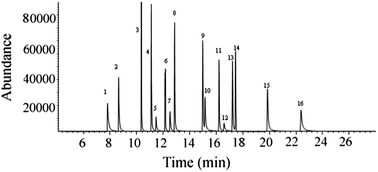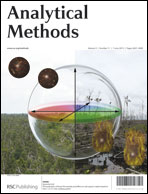Migration of 16 phthalic acid esters from plastic drug packaging to drugs by GC-MS
Abstract
Phthalic acid esters (PAEs), which are human endocrine disruptors, can lead to sperm production atrophy and decreased sperm count and are poisonous to the embryo and active as anti-androgens. Many studies have been conducted to determine PAE levels in drugs and their corresponding plastic packaging; however, there is no systematic research on the transfer of PAE from plastic packaging to drugs. In this study, a simple and convenient method using GC-MS was developed for the simultaneous determination of 16 PAEs. n-Hexane was used to extract PAEs from the samples, and the extract was obtained by primary and secondary amine (PSA) and Florisil clean-up. The different parameters affecting both stages were carefully optimized. Subsequently, a method was developed that proved to be accurate and precise for the detection of 16 phthalates. This method was successfully applied to study PAE migration. The results showed that concentrations of dibutyl phthalate, diisobutyl phthalate and bis (2-ethylhexyl) phthalate in samples increased as a function of storage time. A positive correlation between the amount of PAEs that migrated and storage time during the entire migration process was confirmed. The PAE levels did not exceed the legal limits established by the European Union (0.3 ppm for food); however, changes in drug ingredients and excipients, as well as other factors, may lead to increased PAE migration. Therefore, this phenomenon should receive further attention.


 Please wait while we load your content...
Please wait while we load your content...